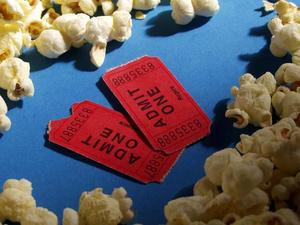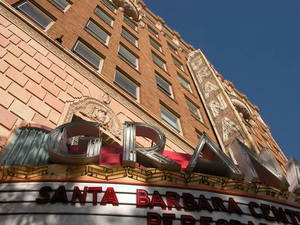Of all the tricks in a cinematographer’s toolkit, camera filters are probably one of the most commonly used. Mastery of the different filters enables filmmakers to exercise greater control over images your audience will hopefully pay money to see. This guide is an introduction to the most commonly used camera filters.
Conversion Filters
These filters change color temperature, converting one color temperature to the other. There are two types of color balance in film, daylight and tungsten, so there are two basic types of conversion filters.
85 Filter — This orange filter is utilized when shooting tungsten-balanced film in daylight.
80A Filter — This blue filter is used when shooting daylight-balanced film in tungsten light.
Combination Filters
These are filters that combine multiple filter types into one filter. The most common types combine an 85 filter with neutral density or polarizing filters.
Neutral Density Filters
These filters do not change the color of light. They alter the amount of light entering the camera lens. Think of them as sunglasses for the camera. These are commonly referred to as ND filters.
Polarizing Filters
These filters reduce reflections and glare from water or other shiny surfaces. These filters are rotated into place to eliminate the hotspot.
Diffusion Filters
As the name suggests, these filters soften images. Sharp lines are lessened, and details are less distinct. These filters are often used to lessen wrinkles in an actor’s face. The poor man’s diffusion filter is panty hose stretched across the camera lens; however, thee are actually nets, not filters. The two most commonly used diffusion filters are:
Tiffen Black Pro-Mist – This filter softens an image while minimizing flare. It also reduces contrast.
Tiffen White Pro-Mist – This filter softens an image without making it appear to be out of focus. It creates a slight flare from light sources.
Fog Filters
These filters simulate the flare associated with fog. They come in various ‘strengths’ depending on the amount of fog desired.
Contrast Filters
These filters affect the contrast of a scene – the difference in the amount of light between the darkest areas of the shot to the brightest areas. Unlike diffusion filters, these filters do not soften image focus.
Low Contrast Filters – These filters brighten shadows without affecting the lighter areas of a shot.
Soft Contrast Filters – These filters darken the lighter areas without affecting the shadows.
Ultra Contrast Filters – These filters combine the actions of the previous two filters. They both brighten the shadows and darken the bright areas.
Coral Filters
These filters are used to give a warm, rosy glow. They are often used to simulate the glow of a fire or to warm up daylight. Closely related are Enhancing Filters, which brighten reds and oranges.
Graduated Filters
These filters only affect part of the frame. One side may be an ND filter while the other side is clear.
Star Filter
This filter is used to enhance sparkles or other bright points of light. The filter expands the glow of these points of light into a star pattern, hence the name. You will often see this filter employed when shooting water sparkling in the sun or twinkle lights in the background, lending a larger than life or romantic feel to a shot.
Optical Flat
This isn’t necessarily a filter, but rather is a clear piece of glass that is inserted where filters go on the camera. It’s used to protect the lens from debris and other such matter that may come at the camera during a shot.
These are but a few of the hundreds of kinds of filters available to cinematographers; however, these are the most commonly used filters in movie production. A basic knowledge of these filters is useful for many film personnel when communicating with the DP. In particular, knowledge of camera filters enables a director to make informed choices while on the set in regards to how each scene is shot.






